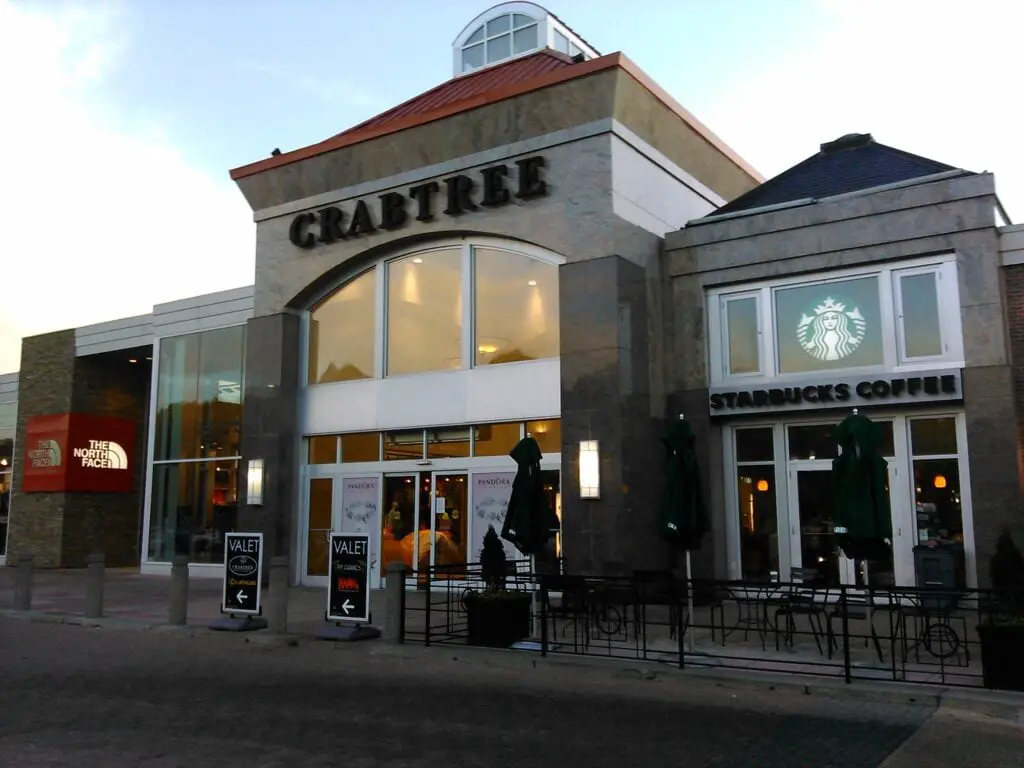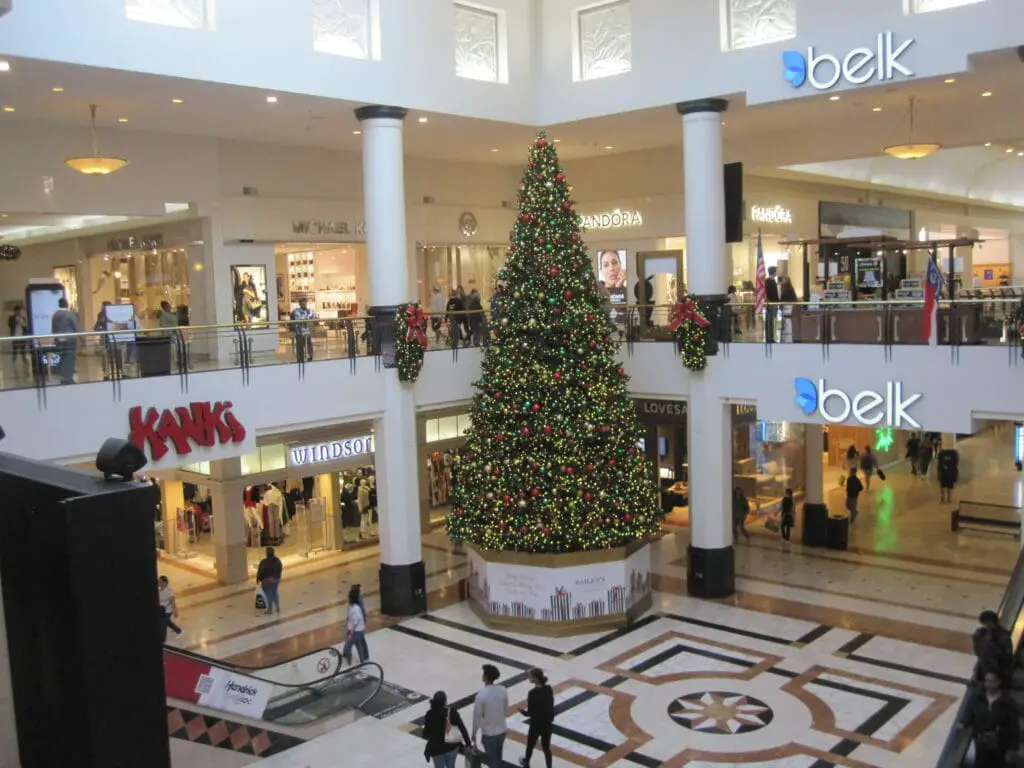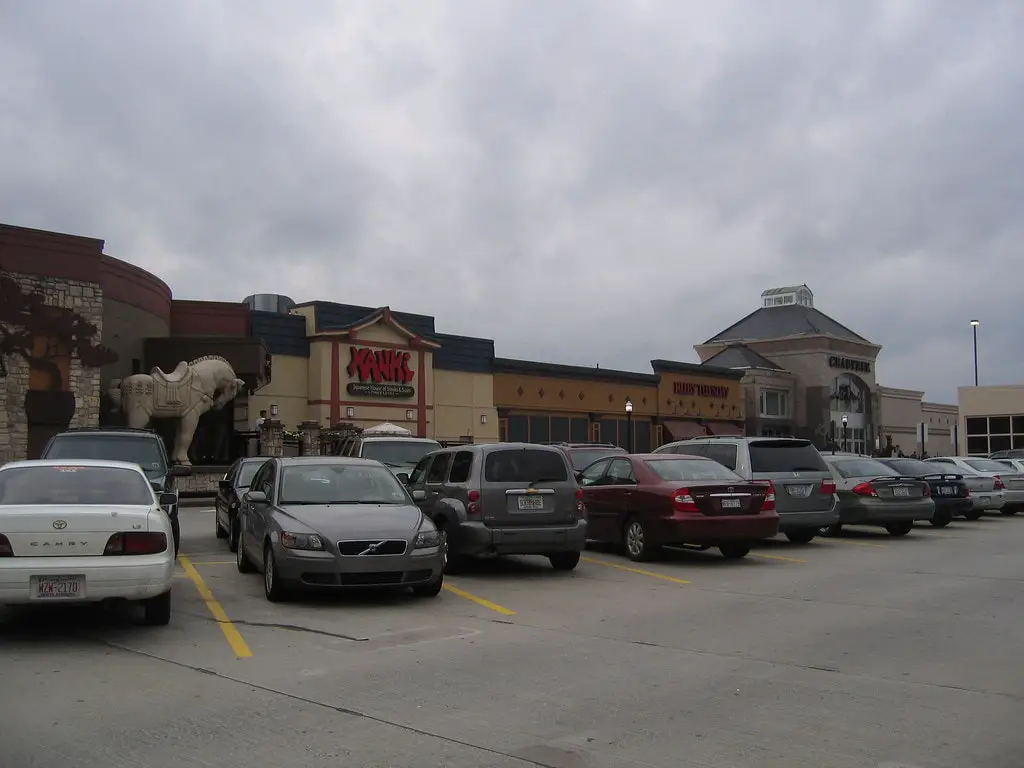Opening and Early Development
Crabtree Valley Mall opened on August 8, 1972. The mall is located at the intersection of US 70/NC 50 and the I-440 Beltline in Raleigh, NC.
Initially, Crabtree Valley Mall featured five anchor stores: Sears, Belk, G.C. Murphy, Miller & Rhoads, and Thalhimer's.
Belk, a regional department store, attracted many shoppers. Sears offered a wide range of goods, from appliances to clothing.
G.C. Murphy, a five-and-dime store, catered to budget-conscious consumers. Miller & Rhoads, a Richmond-based department store, provided upscale options. Thalhimer's, another upscale department store, completed the anchor lineup.
The mall's strategic location and diverse store offerings quickly made it a central shopping hub for Raleigh and the surrounding regions.
The mall catered to a wide audience, including residents and visitors from other parts of North Carolina.
The variety of stores, from budget to luxury, ensured broad appeal.
The early success of Crabtree Valley Mall set the stage for its future expansions and developments, making it a vital part of the local commercial landscape and a key point of interest for things to do in Raleigh, NC.
Early Expansion and Renovations
In 1985, Crabtree Valley Mall began its first expansion.
The addition included more specialty stores to attract a diverse customer base.
A food court also opened, offering various dining options in one central area.
By 1993, the mall needed to modernize further. The renovations introduced a new wing with more retail space and updated amenities.
This expansion helped Crabtree Valley Mall stay competitive with emerging shopping centers like Cary Towne Center and North Hills.
The 1993 renovation also improved the mall's infrastructure.
Enhanced lighting, new flooring, and upgraded entrances created a more appealing shopping environment.
The changes maintained Crabtree Valley Mall's status as a premier shopping destination in Raleigh, ensuring it continued to draw large crowds and offer varied things to do in Raleigh, NC.
Major Developments and Anchor Changes
In the early 1990s, Crabtree Valley Mall experienced major anchor store changes.
G.C. Murphy and Miller & Rhoads closed, leading to significant retail shifts.
Thalhimer's converted to Hecht's in 1992, and Hecht's moved to a larger space within the mall in 1995.
This move allowed for the redevelopment of the original Hecht's space, adding more specialty stores and enhancing the mall's overall appeal.
Sears also relocated to a new location within the mall during this period.
The vacated Sears space underwent redevelopment to accommodate new retail stores, contributing to the mall's evolving layout.
This strategic move allowed the mall to introduce various new shopping options, catering to diverse customer preferences.

In 2006, Macy's replaced Hecht's, further changing the mall's anchor lineup.
This transition reflected broader trends in the retail industry as national chains adapted to changing consumer demands.
Crabtree Valley Mall's ability to attract and incorporate these major retailers demonstrated its adaptability and resilience in a competitive market.
These anchor changes were part of a broader trend of redevelopment and expansion that characterized Crabtree Valley Mall during this era.
The mall consistently updated its offerings to stay relevant, ensuring a diverse and attractive shopping experience.
By continually evolving, Crabtree Valley Mall maintained its status as a premier shopping destination in Raleigh, drawing shoppers from across the region and contributing to its reputation as a must-visit location for things to do in Raleigh, NC.
Structural Challenges and Upgrades
In 1993, a section of Crabtree Valley Mall's parking deck collapsed.
This incident revealed weaknesses in the infrastructure, prompting immediate action.
The mall quickly reinforced the parking structures, ensuring they could handle heavy use and prevent future incidents.
These upgrades included strengthening the deck's support beams and enhancing overall safety features.
Following this, the mall focused on broader renovations.
They upgraded the building's foundation, which allowed for future expansions and heavier foot traffic.
Improved lighting, modernized flooring, and updated entrances enhanced the shopping experience, making the mall more inviting and accessible.
In August 2018, Sears announced it would close, aligning with its strategy to reduce traditional brick-and-mortar operations.

2019, the mall announced an ambitious project to transform the former Sears space.
The plan involved constructing a 30-story mixed-use tower.
This development combined retail, office, and residential spaces, reflecting a trend toward mixed-use urban centers.
The project promised to modernize Crabtree Valley Mall, catering to the evolving needs of shoppers and residents and ensuring the mall remained a key destination in Raleigh.
Crabtree Valley Mall: Flooding Issues
Crabtree Valley Mall has a long history of flooding due to its location along Crabtree Creek, which frequently overflows.
The mall's placement in a natural floodplain makes it susceptible to water damage.
In September 1996, Hurricane Fran caused severe flooding, forcing the mall to close for repairs.
The floodwaters damaged many stores, disrupting business for weeks.
In June 2006, another major flood hit the mall due to heavy rains.
The flooding caused significant damage to stores and the parking area, leading to a temporary closure.
This event emphasized the mall's ongoing vulnerability to natural disasters.
In July 2016, after heavy rains, the parking lot flooded again.
This incident highlighted the recurring problem of water management around the mall.
Shoppers had to navigate flooded areas, and several vehicles were damaged.
During Hurricane Matthew in October 2016, the mall once again faced flooding.
The heavy rains caused Crabtree Creek to overflow, leading to another temporary closure.
These repeated incidents prompted the mall to invest in better drainage systems and flood prevention measures to mitigate future risks.

On April 25, 2017, Crabtree Creek flooded, causing businesses at the mall to lose thousands of dollars.
The water reached 22 feet, just below the major flood stage.
Storeowners reported significant revenue losses due to the closure.
Despite these challenges, many found it worthwhile to continue operating in the mall because of its otherwise advantageous location.
Flooding continues to be a critical issue for Crabtree Valley Mall, but ongoing efforts to improve infrastructure aim to reduce the impact of future floods.
Incidents and Security
Crabtree Valley Mall has faced several security incidents over the years, impacting shopper confidence and prompting changes in security protocols.
In August 2016, a loud noise, which people mistook for gunfire, caused a mass panic.
Shoppers ran for exits, and some were injured in the rush.
The mall temporarily closed to address the situation and reassure visitors.
Authorities later confirmed that no shots had been fired, and the panic stemmed from the noise of a falling object.
In August 2022, a similar incident occurred when another loud noise, also mistaken for gunfire, led to widespread panic.
People fled the mall, and several were injured in the chaos.
Like the previous one, this incident resulted from a misunderstanding, highlighting the mall's need for better crowd control and communication during emergencies.
A more notable event occurred on Black Friday, November 2023, when a loud noise during a pro-Palestinian protest caused a scare among shoppers.
Protesters dropped a large paper scroll from the second floor, which created a loud sound and caused people to believe there was an active shooter.
The ensuing panic led to a temporary evacuation and a heightened security response.
Police and mall security quickly determined that no shots had been fired, and no one was injured.
This incident underscored the importance of clear and immediate communication to prevent panic during such events.

Previously, Crabtree Valley Mall had its private police force established under North Carolina's Company Police Act.
However, this force was disbanded in April 2020.
The mall now relies on local law enforcement and private security firms to maintain safety.
The mall's management has increased surveillance and implemented stricter protocols to prevent future incidents and reassure visitors.
